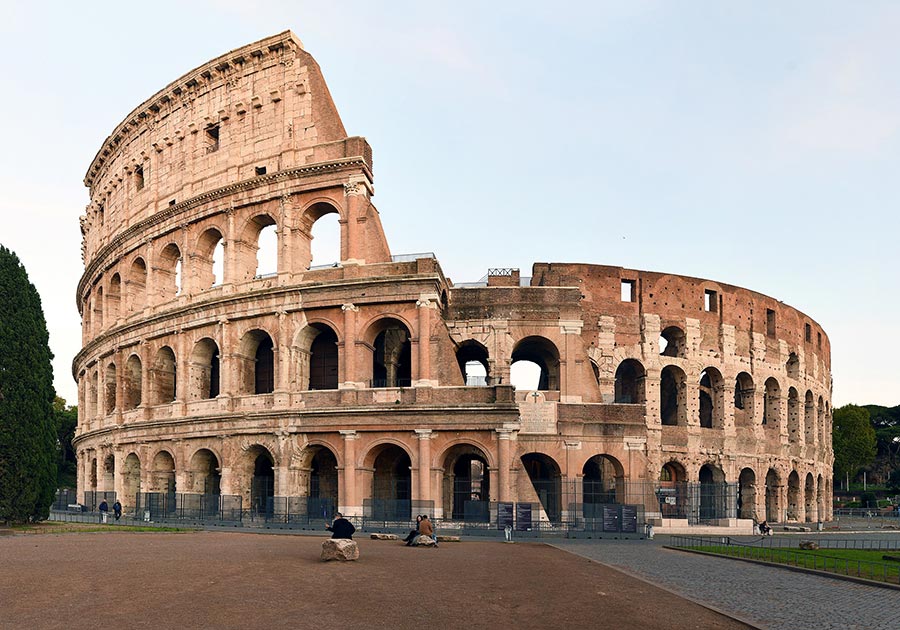The Acoustic Mastery of Ancient Times
From the magnificent amphitheaters of Ancient Greece to the awe-inspiring structures of Ancient Rome, acoustics played an integral role in the design of many ancient architectural wonders. For as long as humanity has existed, we’ve been fascinated by the science of sound and have built structures to improve sound quality. The advancements made by the ancients in acoustic engineering remind us of the enduring importance of acoustics in creating immersive and engaging auditory experiences. By understanding and learning from the methods used in ancient times, we can enhance our own modern-day architectural designs, concert halls, theaters, offices, homes and public spaces to create environments that optimize sound clarity and resonance.
Although lacking the advanced materials and technology available today, their innovative design solutions compensated for these limitations. Notably, the ingenious use of ash as a sound-absorbing material. Additionally, they employed large sections of dense wool artistically draped over castle walls, not only for aesthetic purposes but also to regulate echoes. Furthermore, their expertise extended to the strategic design of cavities with precise shapes and sizes, enabling them to achieve specific acoustical effects.
Let’s explore a few fascinating methods used in ancient times to achieve remarkable acoustic treatment. These extraordinary accomplishments in acoustic engineering stand as a testament to the ingenuity and artistry of our ancestors.
1. Amphitheaters: An Acoustic Marvel:
One of the most famous examples of acoustic excellence in ancient times is the Theatre of Epidaurus in Greece. Built around the 4th century BC, this ancient amphitheater was renowned for its exceptional acoustics. Even today, visitors are astounded by the clarity and resonance of sound within its limestone walls. The remarkable acoustics of the theater can be attributed to the careful consideration of its design elements. The walls were precisely curved, enabling sound waves to bounce off and travel directly to the audience, regardless of their seating position. The limestone material itself, with its unique texture, played a significant role in the amplification and diffusion of sound.

Theatre of Epidaurus in Greece - Photo via Wikipedia
2. Architectural Design for Optimum Acoustics:
The Romans, too, were masters of acoustic engineering, as evidenced by their renowned Colosseum in Rome. Despite its vast size and capacity, the amphitheater was designed to ensure clear audibility for the spectators. The semicircular shape of the amphitheater allowed sound waves to converge at the center, making it easier for the audience to capture every word uttered in the arena. Additionally, the walls were constructed using a combination of concrete, brick, and volcanic ash, which contributed to excellent sound absorption and reduced echoes.

Colosseum in Rome - Photo via Wikipedia
3. Clever Ancient Soundproofing Methods:
In addition to magnificent amphitheaters, ancients possessed clever methods of achieving soundproofing within their structures. One example is the Odeon of Herodes Atticus, located at the foot of the Acropolis in Athens. The renowned structure, constructed in AD 161 by Herodes Atticus as a tribute to his beloved Roman wife, Aspasia Annia Regilla, stands as a testament to ancient craftsmanship. Originally featuring a striking stone façade towering three stories high, the theater boasted a steep slope and an opulent wooden roof crafted from the finest cedar of Lebanon timber. With a seating capacity of 5,000, it served as an esteemed venue for captivating music concerts. Tragically, its glorious existence was cut short when it fell victim to devastation at the hands of the Heruli in AD 267, leaving behind only remnants and ruins. Today the Odeon of Herodes Atticus is a thriving art and culture center, hosting some of the world’s best performers during the last 60 years since its modern day re-opening.

Odeon of Herodes Atticus - Photo via wikipedia
4. Ancient Musical Devices:
Acoustic mastery in ancient times did not only revolve around architecture but also extended to the creation of musical instruments. The Greeks, for instance, developed remarkable sound-producing devices, such as the hydraulis, an early form of the organ. This invention employed water pressure to generate sound, producing a grand musical experience during ancient performances. These early musical instruments showcased the ancients' ingenuity in manipulating sound and their understanding of the principles of acoustics.
The enduring achievements of the ancients in acoustic engineering continue to captivate and inspire us today. Their mastery over soundproofing, architectural design, and musical instruments showcase their deep understanding of the principles of acoustics.
References:
- Hardison, O.B., Jr. (1973). "Ancient Acoustics." Technology and Culture, 14(2), 242-265.
- Hickmann, H.P. (1976). "The Sound of Ancient Theatres." Scientific American, 234(2), 92-101.
- Miller, S.T. (2007). "Gaussian Beam Tracing in Ancient Theatres." The Journal of the Acoustical Society of America, 122(4), 2317-2326.
- Vitruvius. (1914). "De architectura." (H. Morgan, Trans.) Cambridge: Harvard University Press.





